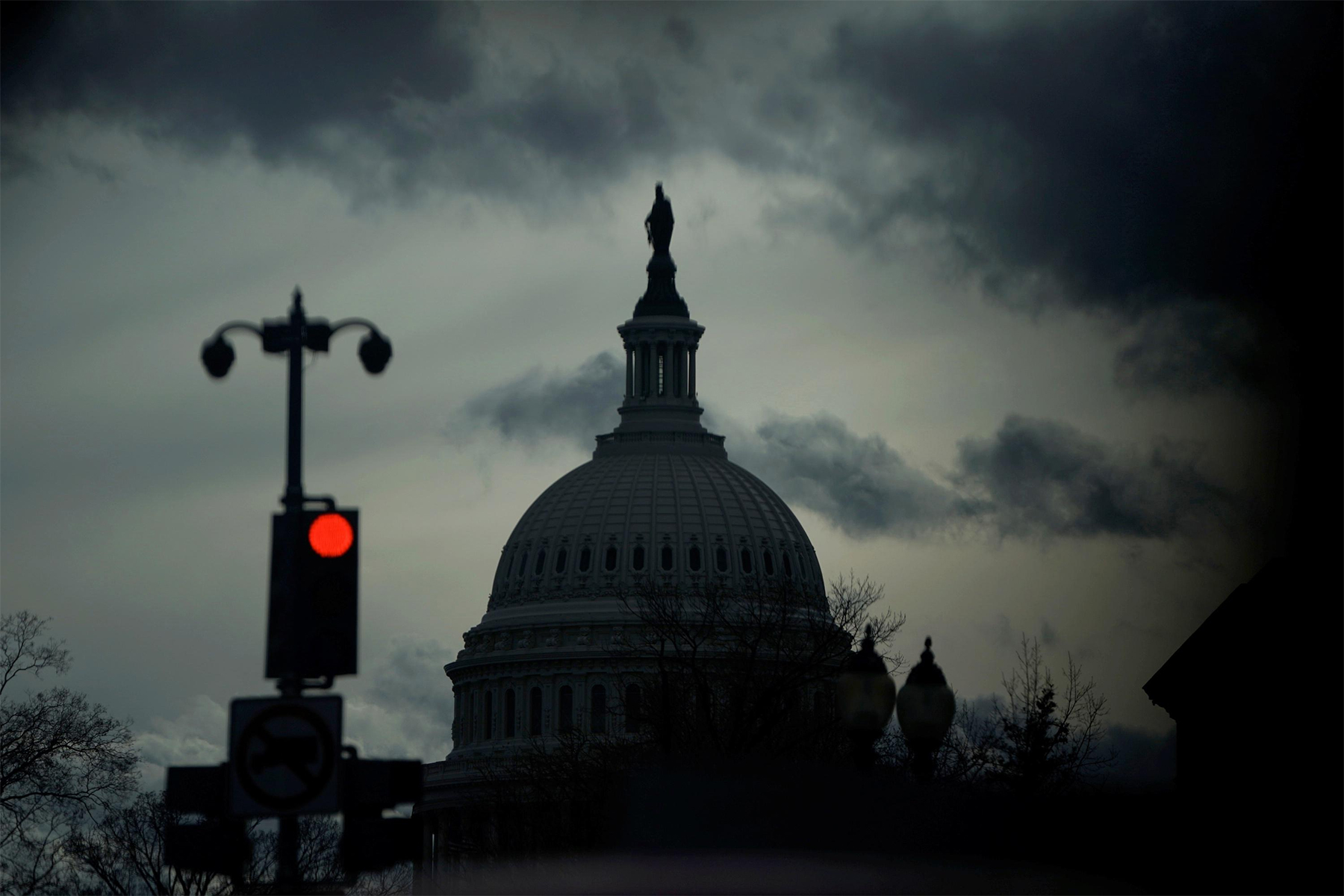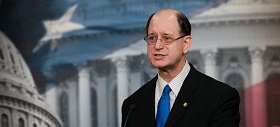On August 1, US President Donald Trump signed Executive Order 13883 “Administration of Proliferation Sanctions and Amendment of Executive Order 12851.” Media outside Russia were quick to label the move as a second round of sanctions against Russia over the alleged use of chemical weapons in the Skripal case. What is this all about, specifically, and what new sanctions could Russia face?
On August 1, US President Donald Trump signed Executive Order 13883 “Administration of Proliferation Sanctions and Amendment of Executive Order 12851.” Media outside Russia were quick to label the move as a second round of sanctions against Russia over the alleged use of chemical weapons in the Skripal case. What is this all about, specifically, and what new sanctions could Russia face?
Trump’s executive order was preceded by a letter from congressmen Eliot Engel (D) and Michael McCaul (R) expressing deep concern over the absence of a second round of sanctions against Russia in the Skripal case. The first round was introduced in August 2018, and the second was due to be enacted back in November of the same year. By signing the executive order, Trump could be signaling that he did not want to oppose the members of Congress, even if their letter was not binding in any way. At the same time, Russia did not provide any serious pretexts for ramping up sanctions against it as part of the chemical dossier. The Kremlin could well interpret the fact that sanctions were introduced without any serious reason as an intentionally hostile step in which the Skripals were no more than a formal pretext. However, Trump seems to consider deteriorating relations with Russia to come at a lower political cost compared to quarreling with Congress, especially when the controversial Russian topic is involved. For this reason, it seems that the White House opted for the most rational strategy of imposing sanctions while seeking to minimize the damage and trying to avoid any unnecessary escalation in its relations with Moscow.
Regarding the “chemical sanctions,” it is important to understand their legal framing. These sanctions fall under the Chemical and Biological Weapons Control and Warfare Elimination Act of 1991 (CBW Act), which provides for introducing sanctions in two rounds. The first was enacted one year ago, and consisted of prohibiting the extension of assistance to the country allegedly in breach of non-proliferation regimes, i.e. Russia, as well as banning weapon sales and financing relevant transactions, denying state lending, and restricting exports of sensitive goods and technology. The first round had little bite, since Moscow either did not rely on the United States or was already under similar restrictions. The second round of sanctions was to go into effect in case the country did not reconsider its plans or chemical weapons capabilities.
Russia could hardly fulfill these requirements in political or technical terms. From a political perspective, Moscow has never recognized its involvement in the poisoning of the Skripals, while from a technical standpoint, the US law requires an inspection by the UN or other monitors, which would be strange considering that Russia has already eliminated its chemical weapons stockpiles. For these reasons, the enactment of the second round of sanctions was just a matter of time. It has to cover at least three out of six restrictive measures (opposing financing through international institutions, prohibiting banks from granting loans to Russian government agencies, introducing import and export restrictions, downgrading diplomatic relations, and restricting flag air carriers operating flights to the United States). It has to be noted that apart from the CBW Act, the legal underpinning includes a number of presidential executive orders. These include Executive Order 12938 of November 14, 1994, declaring a state of emergency regarding the spread of WMDs. It generally mirrors the sanctions set forth by the CBW Act, although to a somewhat lesser extent. Procedures for administering the sanctions were set forth in Executive Order 12851 of June 11, 1993. In fact, the recent executive order includes amending Executive Order 12851.
Russia is not mentioned in the August 1, 2019 executive order. Instead, it deals with an abstract country. Under the document, when the president or the Department of State decide to use sanctions set forth in the CBW Act, the Treasury has to use two measures: oppose the extension of any loan or financial or technical assistance by international financial institutions, and prevent US banks from making loans to the government of this country. In other words, the executive order de facto reduces the application of the CBW Act to two out of six possible restrictions, although the law provides for using three types of sanctions. The executive order in its current form does not provide a specific timeframe for imposing sanctions. However, the Treasury and the Department of State can take this action at any time.
The two agencies got down to implementing the executive order without delay. The spokesperson for the Department of State, Morgan Ortagus, was the first to make a statement to this effect, and the Treasury issued a directive on sanctions under Executive Order 13883 at about the same time. These documents pointed directly at Russia and the Salisbury incident, and contained a detailed description of the restrictive measures.
The first restriction reproduces the corresponding clause from Trump’s executive order. It provides for the US opposing the extension of financial assistance to Russia by international financial institutions. The second restriction adds an important provision to the CBW Act by prohibiting US banks from lending to the Russian government. The Treasury and the Department of State expanded its application by prohibiting US banks from participating in the primary market for non-ruble denominated Russian sovereign debt and lending non-ruble denominated funds to the Russian government. Finally, the third measure consists of restricting certain export operations as has yet to be determined by the US Department of Commerce, which is not mentioned in the Trump executive order. In fact, this third measure was added by the government agencies in charge in order to comply with the CBW Act whereby three, not two, restrictions have to be used.
These measures hardly pose any serious threat to Russia. In fact, international institutions have long since stopped all financing programs for Russia. The Russian government does not use loans from US banks. The Russian financial authorities took care of minimizing any possible damage since the enactment of CAATSA in 2017 and when Congress started discussing sanctioning Russia’s sovereign debt.
Interestingly, by sanctioning Russia’s sovereign debt the Trump administration did what Congress has been proposing for a long time. In fact, the interpretation of the Trump executive order by the US Treasury echoes the July 2019 Sherman-Waters amendment or ideas put forward by senators Marco Rubio and Chris Van Hollen in the DETER draft bill. However these initiatives by congressmen were related to the alleged election meddling, while the Treasury acted on the so-called chemical dossier. For this reason, this new round of sanctions is unlikely to stop Congress from taking further action. There is a strong possibility that these initiatives will take on a new dimension with a focus on other measures.
The Treasury directive sets out a more detailed description of the sanctions compared to the Trump executive order or the CBW Act. It is not uncommon for US regulators to follow a stricter rather than a softer reading of vague provisions, which makes financial institutions extremely cautious. As a result, they tend to refuse transactions that are not directly prohibited by law. The Treasury directive is intended to mitigate these risks.
There is also a risk that the norms established by the CBW Act are applied to transactions involving Russia’s public or state-owned companies. Financing restrictions are already in place as part of sectoral sanctions against Russia’s financial and energy sectors. Extending these measures to other sectors would be bad news for the Russian economy.
At the end of the day, the overall situation has changed little, since the most painful measures were introduced back in 2014. Moreover, it is explicitly stated in the directive that the prohibition does not apply to state-owned enterprises. So far, they have not been subject to the so-called chemical sanctions.
First published in the Valdai Discussion Club.






